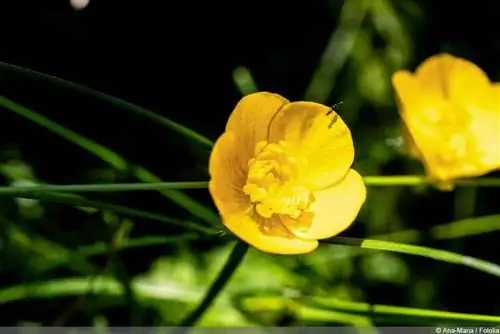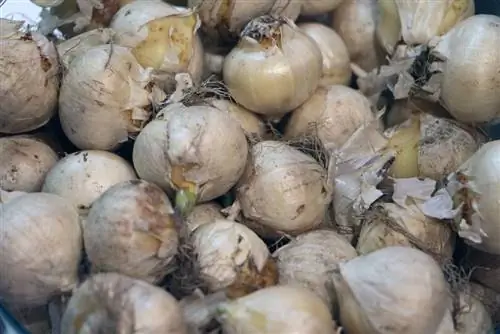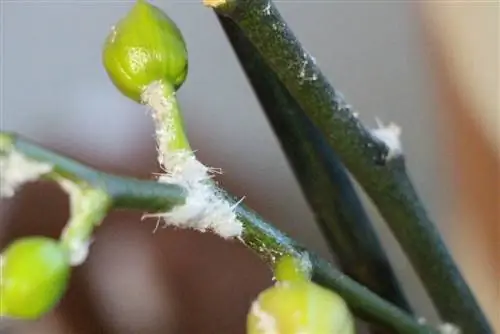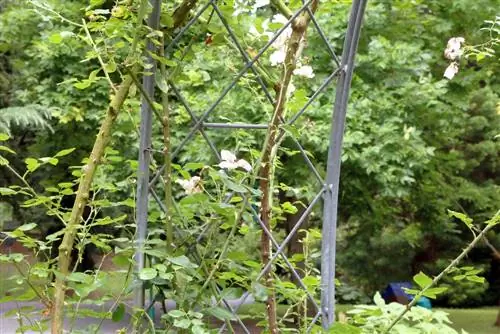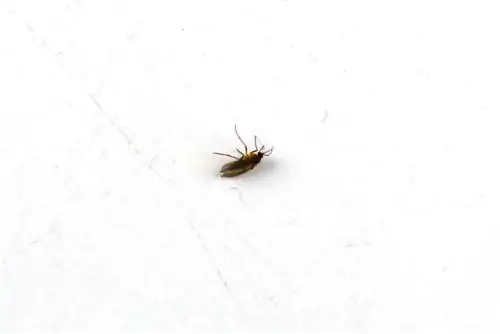- Author admin [email protected].
- Public 2023-12-17 03:39.
- Last modified 2025-01-24 12:45.
When a yellow carpet covers the lawn every year, the creeping buttercup could be the master weaver. This plant produces many small flowers and they are quite beautiful to look at. But hardly anyone can enjoy the gifted meadow undisturbed. The grief over the dwindling lawn is too great. The assertive buttercup is wresting more and more space from the green tufts of grass. Get rid of it!
Natural distribution area
Nobody sowed it, nobody planted it and yet it is just there. They suddenly appear in our gardens like they have sprung from a magic hat. The newcomers are usually not noticed, let alone paid attention to. Until the buttercups stretch out their magical flowers towards us! Now the uninvited guests can no longer be overlooked. But where does the creeping buttercup actually come from?
- the herb loves water
- grows on moist meadows
- also on the edge of garden ponds
Nobody has to go far to discover a wild buttercup. It is an integral part of the local landscape. And so it happens that it occasionally gets lost in cultivated gardens. The threat of invasion is practically lurking around the corner.
Make friends with the weeds?
“There are no weeds, only wild herbs,” an old and wise gardener once said. She is right, because such a beautifully blooming plant should not be insulted with such an ugly word. What can the buttercup do to make it unwelcome on your home lawn?
- people like to admire her on a damp meadow
- its bright yellow creates a summery atmosphere
What makes the creeping buttercup a weed in most eyes is its enormous desire to conquer.
- doesn't settle for a humble place
- gradually drives out everything that grows around it
- doesn’t stop at your beloved plants
- deprives them of needed nutrients
- he particularly likes to crowd out the green lawn
Tip:
Decide for yourself what role the buttercup can play in your garden. Because not everything that is described as weeds has to go. At least not completely. A few flowers can remain and cheer the heart.
On a triumphant march with seeds and runners
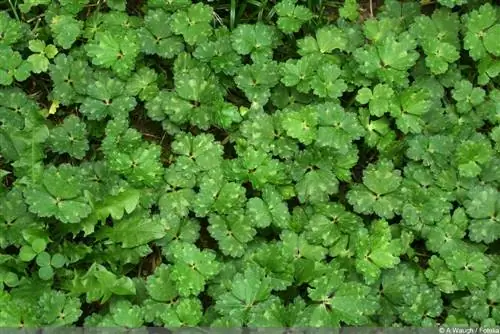
Knowledge of reproduction provides the approach to combating it. The yellow buttercup is excellent at multiplying quickly and across the board. She keeps two paths open for this. On the one hand, it forms seeds after flowering, and on the other hand, it sends out runners into the surrounding area.
- Nuts grow from flowers
- the seeds ripen in it
- Wind and birds help with sowing
- Foothills creep forward
- they form new roots that penetrate the soil
- up to 50 cm deep
- a new plant has already been born
If these two types of propagation of the buttercup are not vehemently put to work, the garden will soon be firmly in their hands, not to say in their roots.
Lawnmower against seed ripening
First the flowers are formed, later the seeds follow. This takes time, which the gardener can use to his advantage. He can effectively interrupt this cycle with a lawn mower. If the yellow flowers are mowed down regularly and at short intervals, seeds can no longer form. This will at least stop this type of spread. The green lawn has also been mowed. But there are still the mother plants and the numerous runners that cannot be controlled so easily. The lawnmower cuts off all the flowers, but the roots remain undamaged and sprout quickly and reliably.
Get out the root
As long as there is still a small piece of root in the ground, the buttercup will not give up. A section also sprouts again and allows the wild weeds to resurrect. Therefore, the plant must be completely removed from the soil. But that's easier said than done.
- the root system is strong
- it reaches deep into the ground
- If you tear it out by hand, there will be leftover residue
- the plant has visually disappeared but not defeated
Tearing it out by hand is so ineffective that it is not recommended at all. There is an urgent need for a tool that captures the root in its entirety and brings it completely to light. Two garden tools provide valuable services in this regard:
- Hoe exposes the root
- a cookie cutter is ideal for the lawn
These two devices make work much easier and also save time. With a large number of buttercups, every minute is needed. As soon as a new buttercup appears, it should be plucked out immediately. The longer it is allowed to grow undisturbed, the stronger it will become.
Tip:
Every buttercup removed leaves a gap in the lawn. Fill the holes with fresh soil and sow new lawn seeds.
New lawn, new happiness
Cutting out is a laborious job and it is not always rewarded with success. Sometimes creeping buttercups just can't be gotten rid of. If there are too many specimens in the lawn, they have already formed an impenetrable network of roots. Here the garden owner can't get anywhere by cutting out the area alone. He has to admit defeat and make friends with the yellow meadow. Or choose a radical solution. The creeping buttercup is guaranteed to be gone afterwards, but so is the green lawn. We're talking about removing the top layer of earth and everything that grows on it.
- remove entire turf
- distribute new topsoil
- sow the lawn again
Removing the earth takes a long time and is very strenuous. The extent to which a hobby gardener wants to undertake this effort on their own is up to them. Such work can of course also be carried out professionally by gardening companies. You save on your own work, but you end up with a big bill.
Tip:
The new lawn is free of buttercups and other wild herbs. For many garden owners, this is a wonderful sight. But how long will it stay that way? Now it's time to be careful and react immediately if the creeping buttercup gets lost again.
Chemistry, but please be careful
Most garden owners try to avoid chemicals as much as possible for the sake of the environment. Large-scale use of such agents not only helps, but also leaves behind residues that are not good for the rest of nature. A chemical weed killer can also be used to combat buttercup. Handling is complex because the product has to reach the creeping buttercup in a targeted manner.
- the weed killer belongs directly on the wild weeds
- must be applied with a hand brush
- or can be sprayed specifically with a hand sprayer

Chemical control is unsuitable if the buttercup has already taken over large lawns. Individual specimens, however, can easily be rendered harmless in this way.
Acidic soil makes things difficult for the buttercup
Even a so-called weed places demands on its place of residence. If these are fulfilled, then it settles down. However, if it finds the lawn uncomfortable, its urge to reproduce is tamed. The creeping buttercup thrives on acidic soils. Anyone who ensures that the pH value of their soil increases has already taken an important step towards prevention.
- first measure the pH value
- acidic soil has a value below 6.5
- the application of lime neutralizes the soil
- the wild herb then has a harder time thriving
What else helps
When caring for the lawn, the following can also be taken into account so that the creeping buttercup does not find optimal living conditions:
- don't keep the soil constantly moist
- Avoid fertilization with manure
Tip:
Remnants of the buttercup must not be composted under any circumstances. Seeds can survive in it and root parts can re-root. This sets off a new spread with the next compost distribution.

